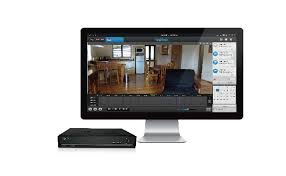What is an Analog CCTV Camera
What is an Analog CCTV Camera
Analog CCTV cameras, also known as traditional CCTV cameras, are the older technology compared to the newer IP cameras. They work by converting the captured video image into an analog signal, which is then transmitted through coaxial cables to a Digital Video Recorder (DVR) for recording and storage. Here's a breakdown of their key characteristics:
Pros:
Simpler technology: Easier to install and set up compared to IP cameras.
Lower cost: Analog cameras and DVRs are generally less expensive than IP systems.
Reliable: Proven and reliable technology with a long history of use.
No network dependence: Operates independently of a network, making them suitable for standalone security systems.
Cons:
Lower video quality: Limited to standard definition (SD) resolution, typically around 480 lines.
Scalability limitations: Adding new cameras requires additional cabling and may necessitate upgrading the DVR.
Security vulnerabilities: More susceptible to signal interference and tampering.
Limited features: Generally offer fewer advanced features like high-quality night vision, remote access, or motion detection with complex analysis.
Applications:
Analog CCTV cameras are still a good option for some situations, such as:
Low-cost security for homes or small businesses: If you're on a budget and only need basic video monitoring, an analog system can be a cost-effective solution.
Standalone security systems: For situations where a network connection isn't available or reliable, an analog system can function independently.
Replacing existing systems: If you already have an analog CCTV system in place, it might be more cost-effective to upgrade components rather than switching to a whole new IP system.
Future of Analog CCTV:
Examples of an analog cctv cameras
Here are two common examples of Analog CCTV cameras:
Bullet camera: These long, cylindrical cameras are ideal for outdoor use and provide a clear view of a specific area. They're often used in parking lots, along driveways, and other wide-open spaces.
Dome camera: These dome-shaped cameras are vandal-resistant and provide a 360-degree view of an area. They're often used indoors in places like retail stores and offices.
Installation material for analog cctv camera
To install an analog CCTV camera system, you'll typically need a variety of materials to ensure proper functionality and a clean setup. Here's a list of common items you might need:
Camera and Recording Device:
Analog CCTV Cameras: Choose the type that suits your needs (bullet, dome, etc.) Ensure they are compatible with your DVR (see below).
Digital Video Recorder (DVR): This device receives the video signal from the cameras and records the footage for storage and playback.Cabling:
Coaxial Cable: Used to transmit the video signal from the camera to the DVR. Choose the appropriate cable length for each camera's location.
Power Cable (Optional): If your cameras don't use Power over Coax (PoC), you'll need separate power cables to provide power to each camera.
Connectors:
BNC Connectors: These connectors are used on both ends of the coaxial cable to connect them to the camera and the DVR.
Mounting Hardware:
Screws and Anchors: For securing the cameras to walls, ceilings, or poles. Choose the appropriate type and size based on the mounting surface and camera weight.
Camera Mounts: Wall mounts, pole mounts, or other brackets depending on where you'll be installing the cameras.
Other Installation Materials:
Cable Clips: These help organize and secure the cables along walls or baseboards for a clean appearance.
Cable Conduit (Optional): Provides additional protection for cables running outdoors or exposed areas.
Crimping Tool (Optional): If you're using pre-made coaxial cables with BNC connectors, you won't need this. But if you're making your own cables, a crimping tool is necessary to properly attach the BNC connectors to the cable ends.
Electrical Tape: Useful for securing connections and providing some weatherproofing if needed.
Additional Considerations:
Power Supply (Optional): If your cameras don't use PoE and you're using separate power cables, you might need a power supply unit to provide the required voltage to the cameras.
Monitor (Optional): While not essential, a monitor allows you to view live and recorded footage from your cameras.
Uninterruptible Power Supply (UPS) (Optional): Protects your CCTV system from power surges and outages, ensuring continuous operation.
Remember: This list is a general guideline, and the specific materials you'll need may vary depending on your camera system, the number of cameras you're installing, and your desired setup. It's always best to consult the instruction manual that comes with your CCTV camera system for the most accurate recommendations.
While IP technology is rapidly becoming the standard, analog CCTV cameras still have a place in the market. However, as technology advances, the cost of IP cameras continues to decrease, making them a more attractive option for many users.









Comments
Post a Comment